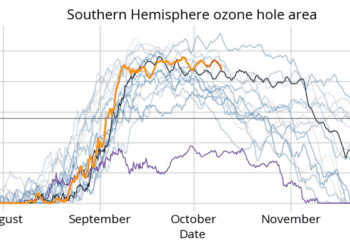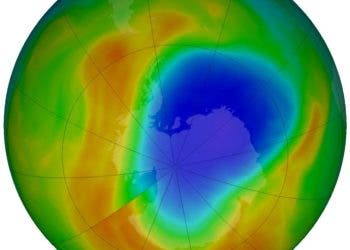The ozone layer is a protective blanket of triple oxygen atoms that makes up the stratosphere and shelters life on Earth from ultraviolet radiation. A couple decades ago, a huge hole was punctured into the ozone layer above Antarctica which got a lot of people worried. Thankfully, it’s been sealed since thanks to a remarkable international effort that drastically reduced the chemical in the air that were puncturing. At ground level, however, ozone is pretty bad if you inhale it and is one of the main components of smog. As the planet warms, polluted air will react more often with the sun’s ray to form more ozone. A new study suggests that in the United States, residents might experience three to nine more days of unhealthy ozone levels by 2050.
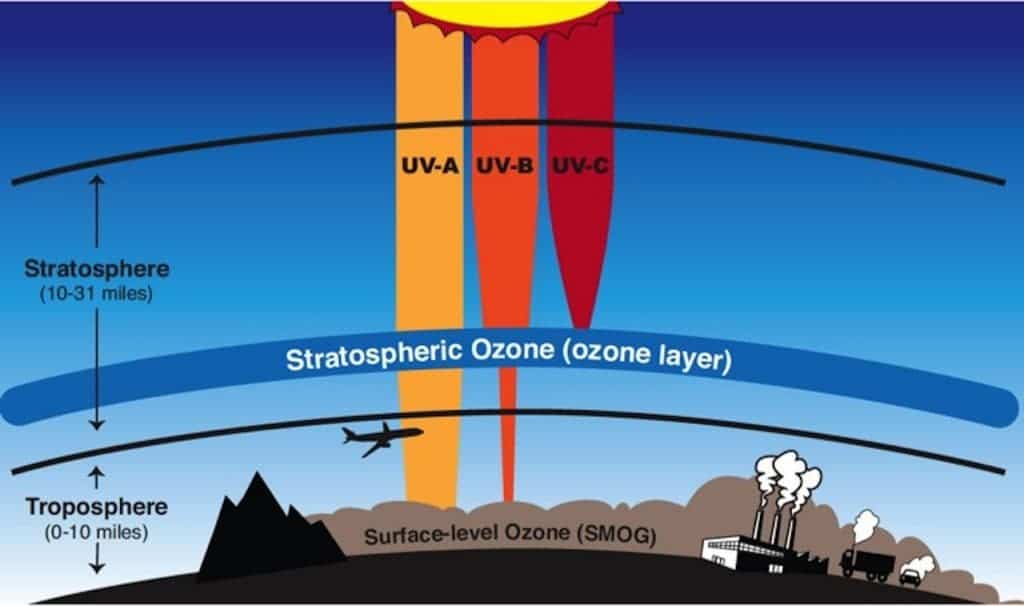
Ozone occurs naturally at ground-level in low concentrations. The two major sources of natural ground-level ozone are hydrocarbons, which are released by plants and soil, and small amounts of stratospheric ozone, which occasionally migrate down to the earth’s surface. Neither of these two can release enough ozone for it to be considered a threat to health. That’s where man-made activities come in.
Since 1900, the amount of ozone near the earth’s surface has more than doubled. We make ground-ozone by emitting hydrocarbons and nitrogen oxides from automobiles, gasoline vapors, fossil fuel power plants, refineries and other industries. When these chemicals react with sunlight, particularly ultraviolet rays, ozone — a molecule comprised of three oxygen atoms (O3) — is formed.
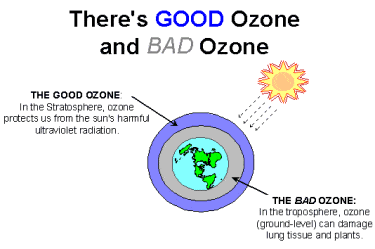
Researchers at the Paulson School of Engineering and Applied Sciences (SEAS) looked at how tropospheric ozone generation will be affected across the United States based on projected temperature increases due to climate change. The team was careful to include ozone suppression into their equations, a phenomenon in which very hot temperatures actually impede ozone formation.
“Ozone production accelerates at high temperatures, and emissions of the natural components of ozone increase. High temperatures are also accompanied by weak winds, causing the atmosphere to stagnate. So the air just cooks and ozone levels can build up,” said Harvard’s Loretta Mickley, who also worked on the study.
Despite ozone suppression, many regions of the United States will experience more ozone and, consequently, more smog. California, already the state with the most air pollution, the Southwest, and the Northeast could all get up to nine extra days a year of ozone past safe levels.
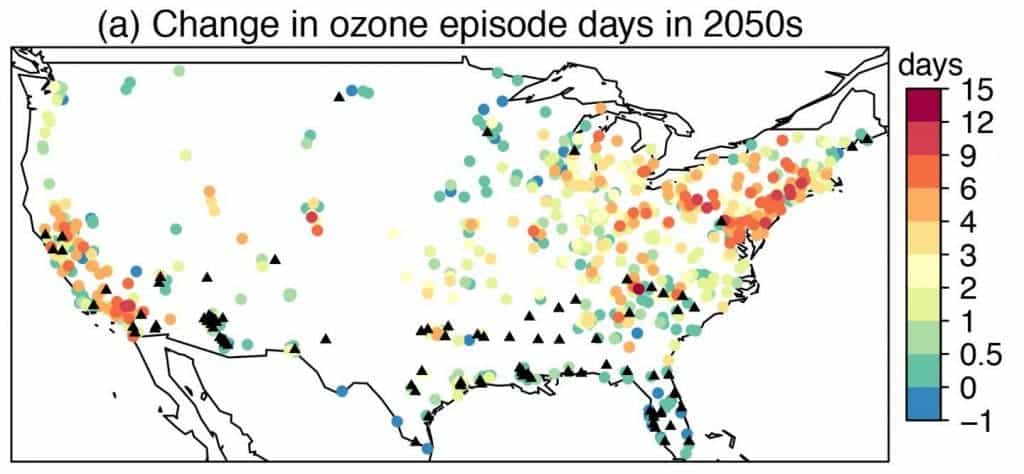
“In the coming decades, global climate change will likely cause more heat waves during the summer, which in turn could cause a 70 to 100 percent increase in ozone episodes, depending on the region,” Lu Shen, a graduate student at Harvard’s School of Engineering and Applied Sciences, who led the study, said in a statement.
Ozone pollution is linked to shortness of breath, asthma attacks, increased risk of respiratory infections, heart disease and even infertility.
“This research gives us a much better understanding of how ozone and temperature are related and how that will affect future air quality,” Mickley said. “These results show that we need ambitious emissions controls to offset the potential of more than a week of additional days with unhealthy ozone levels.”
Findings appeared in the journal Geophysical Research Letters.


